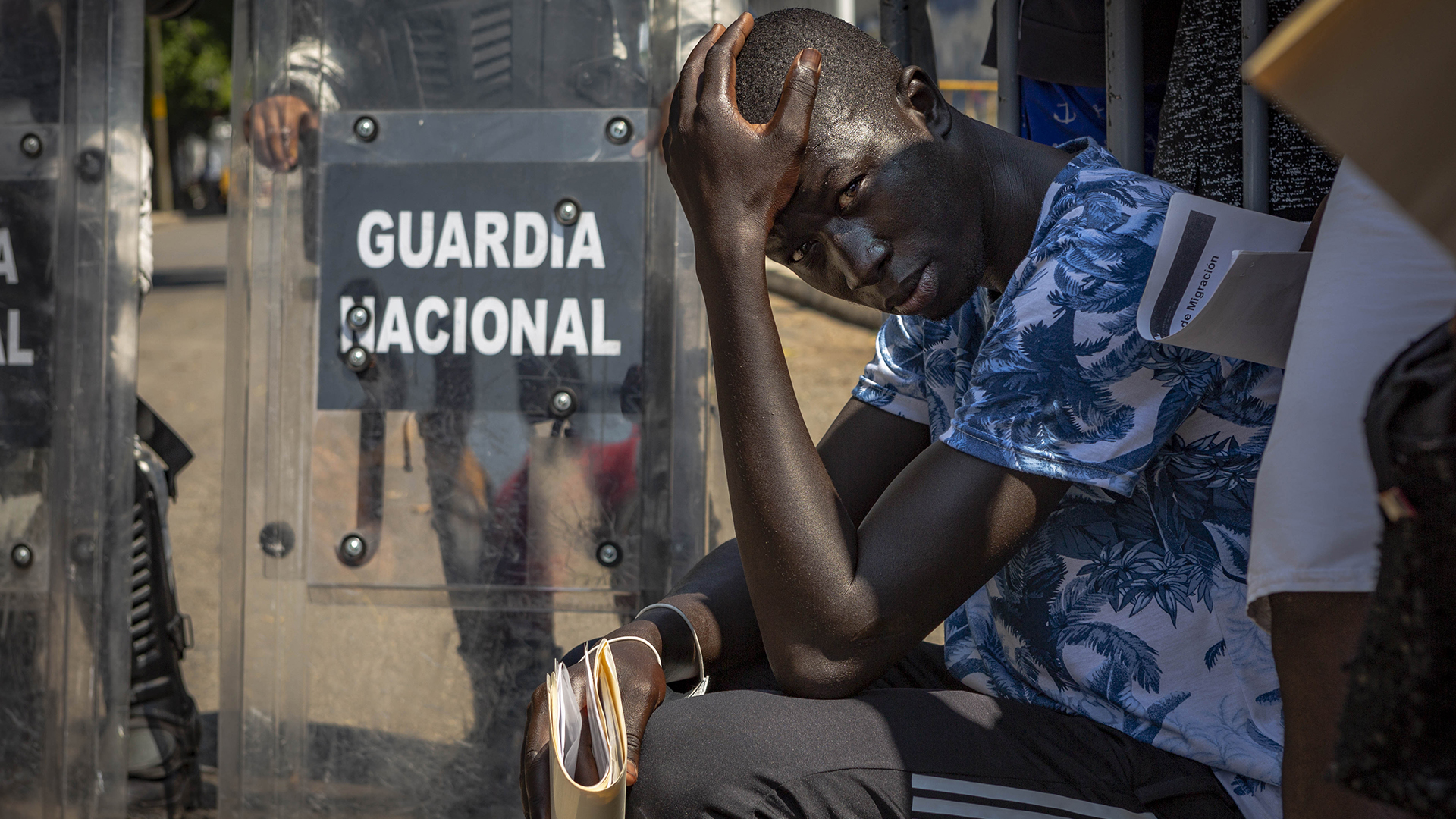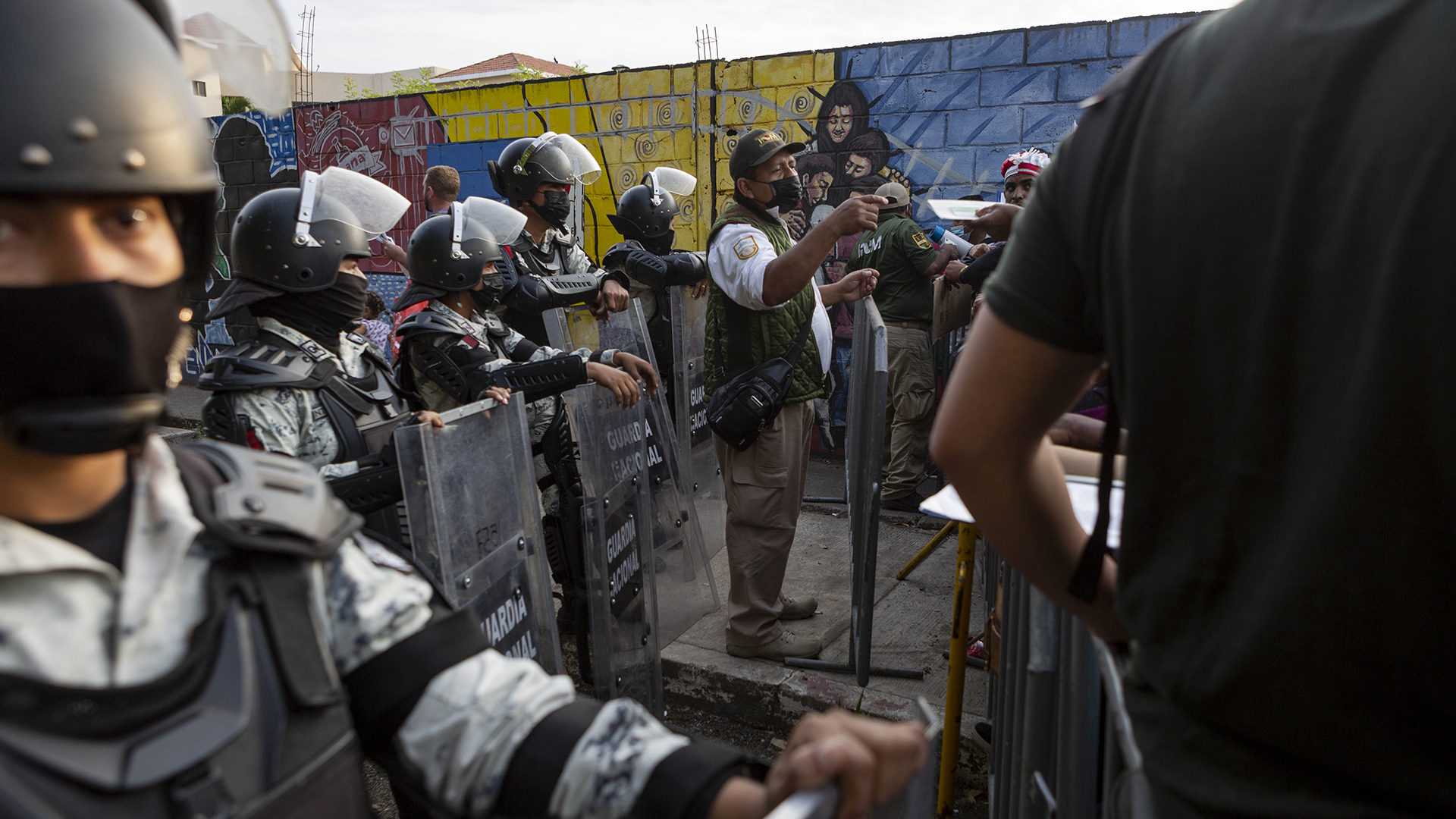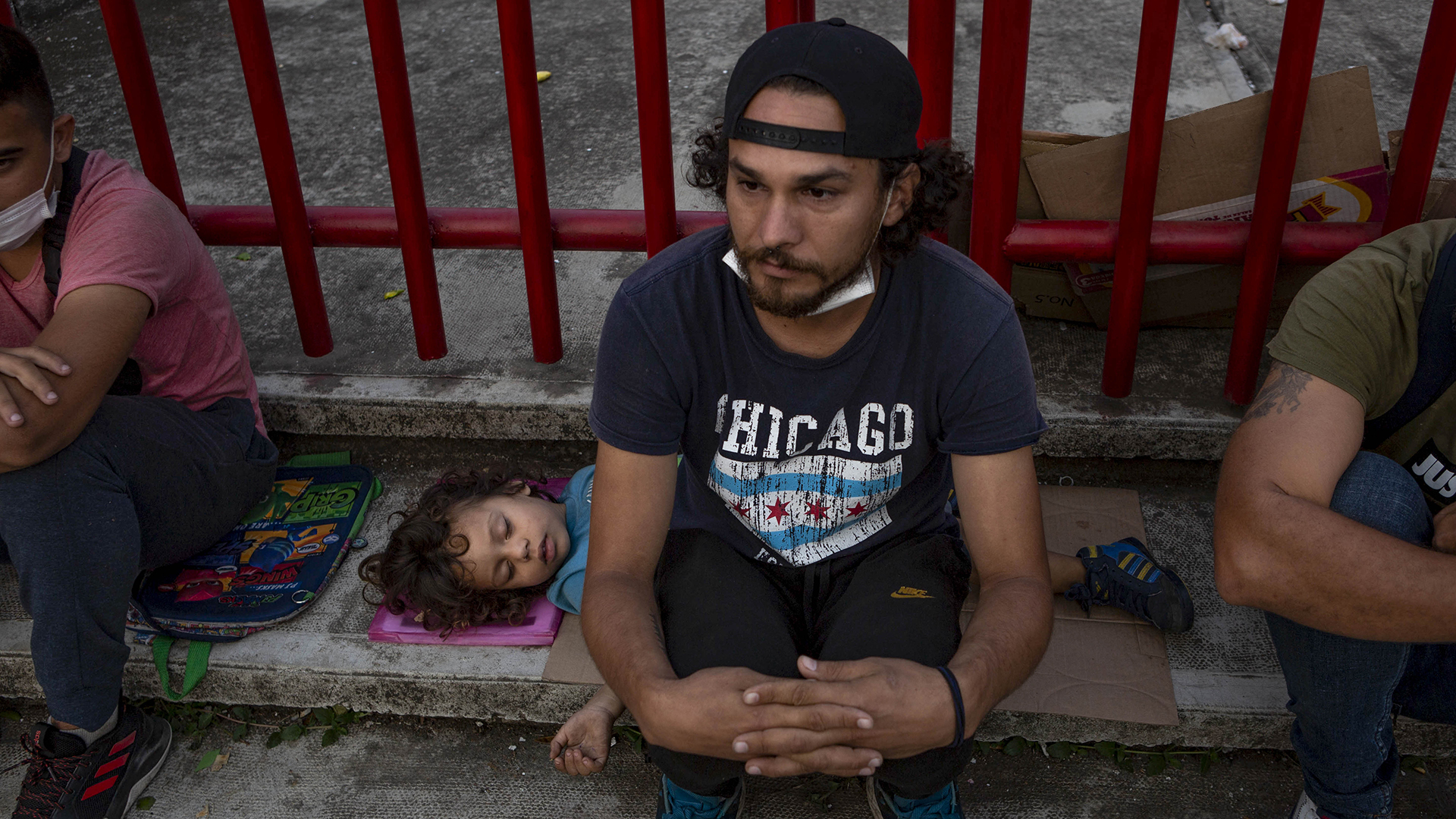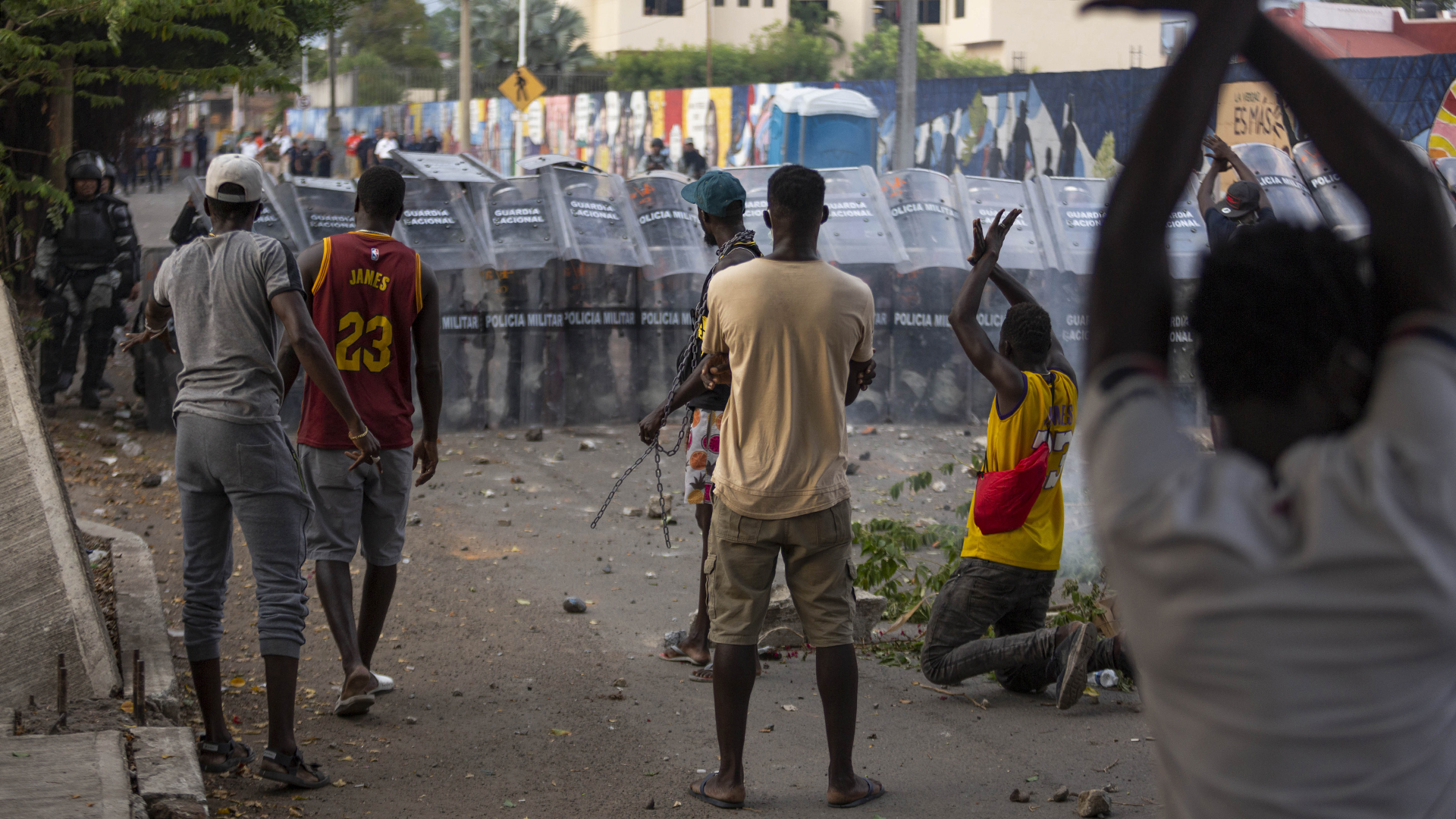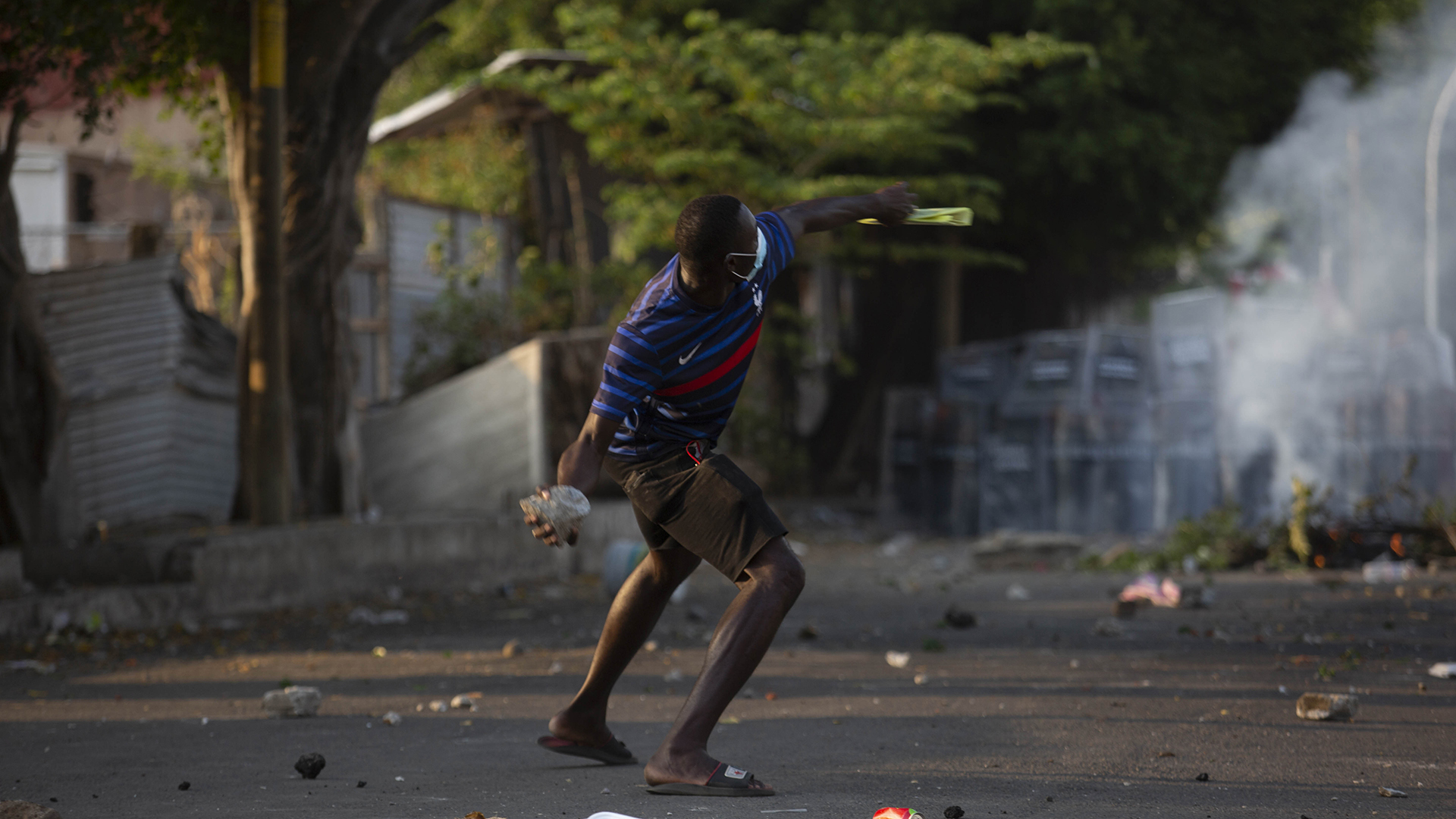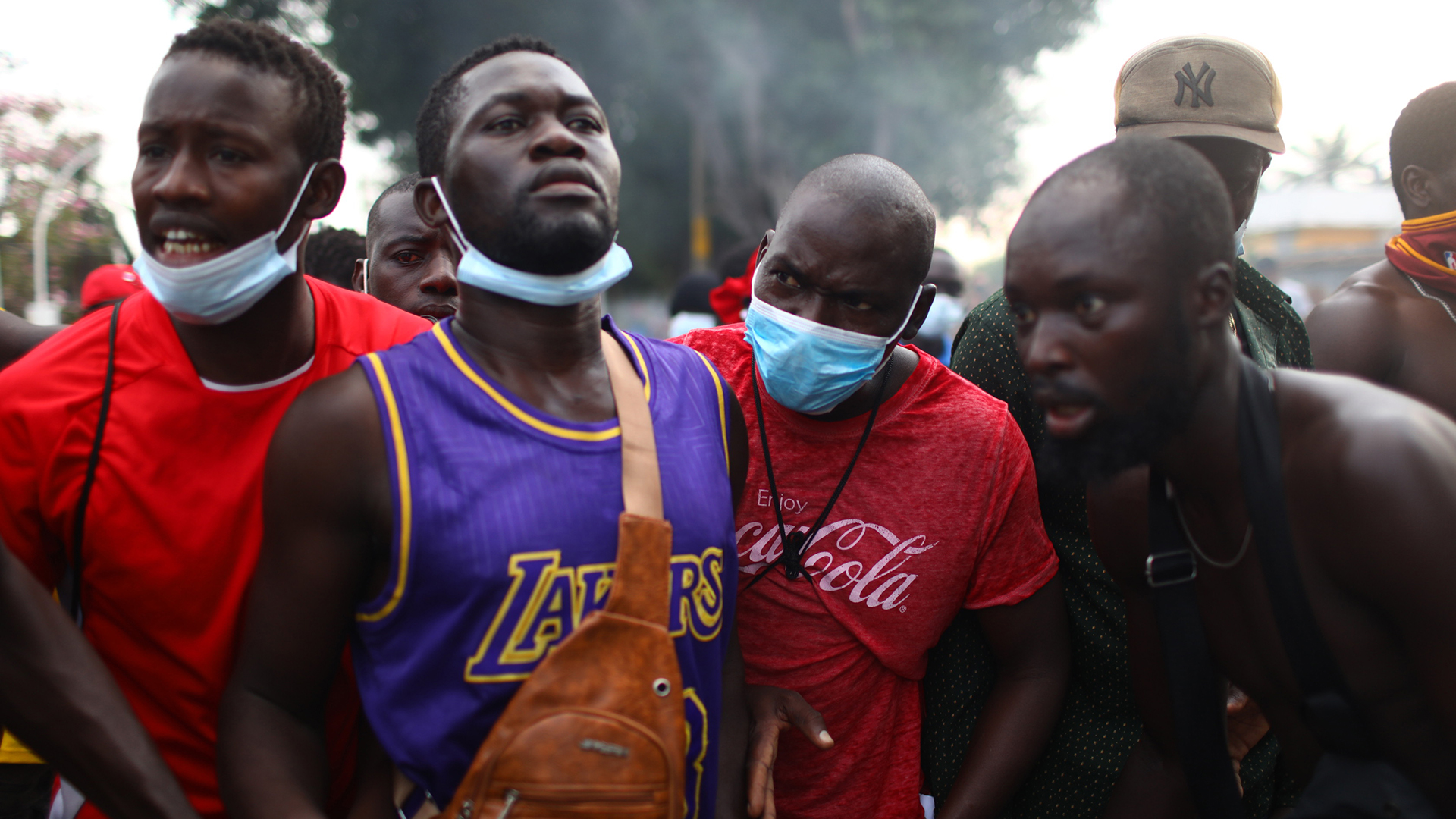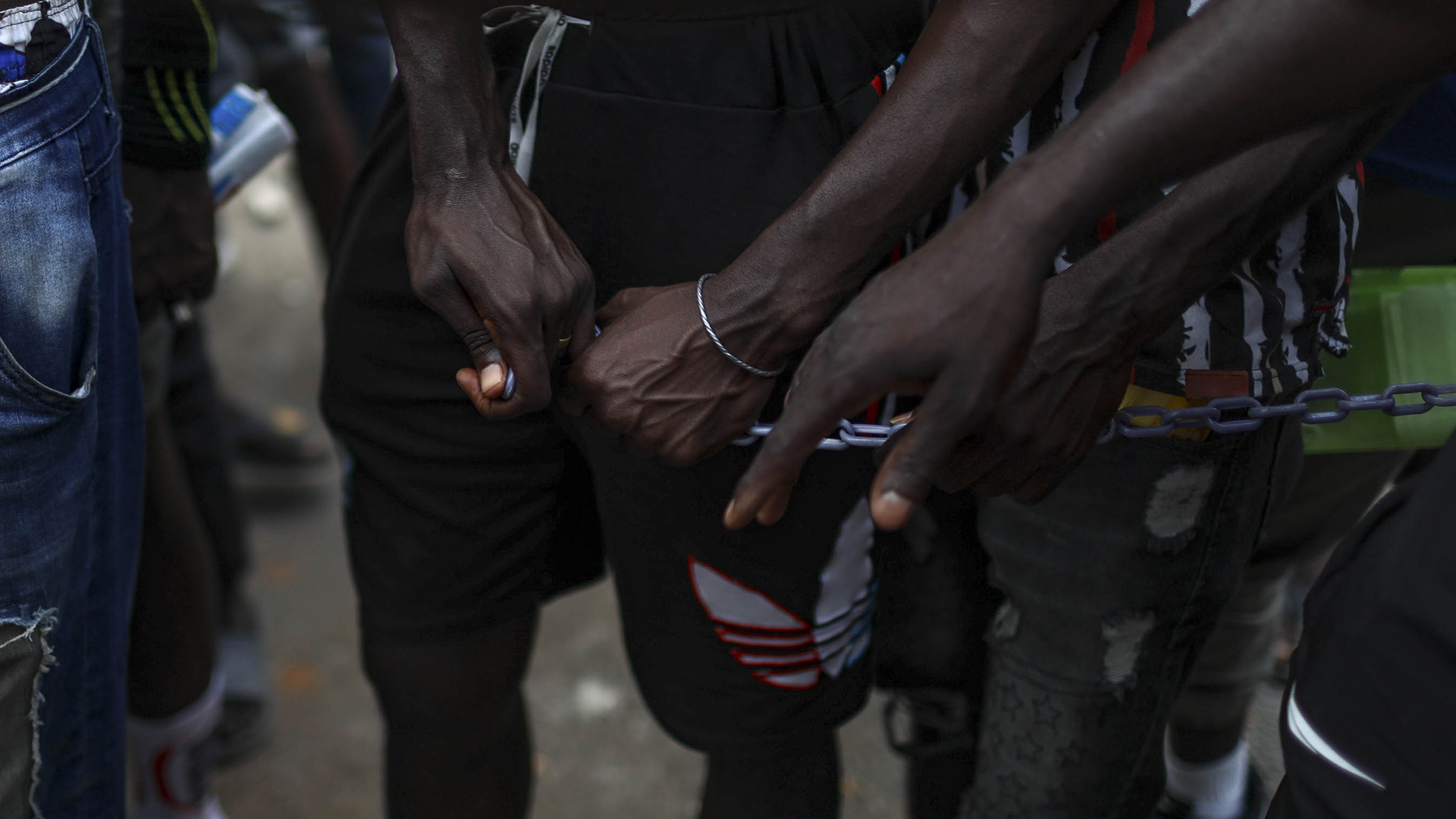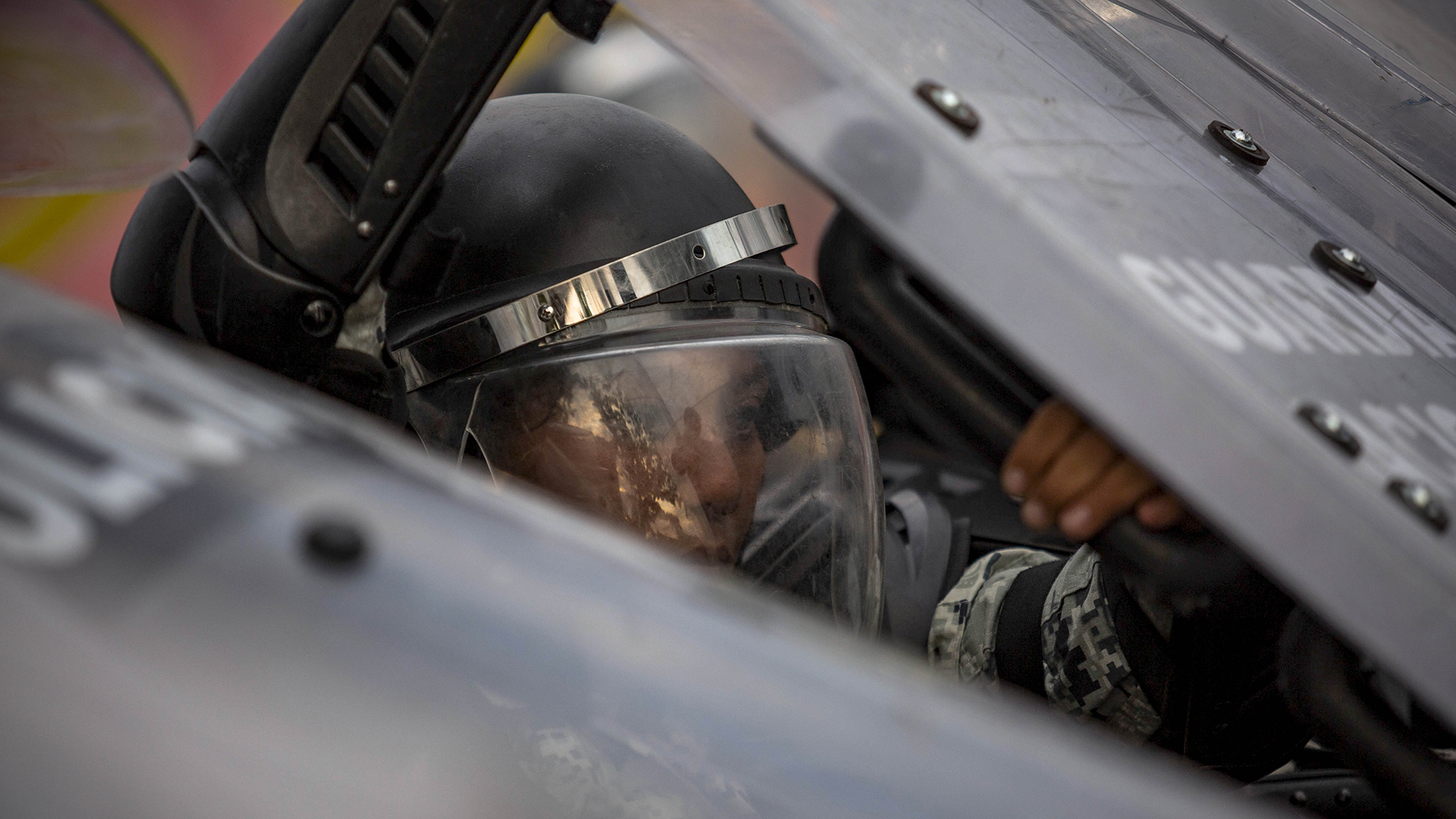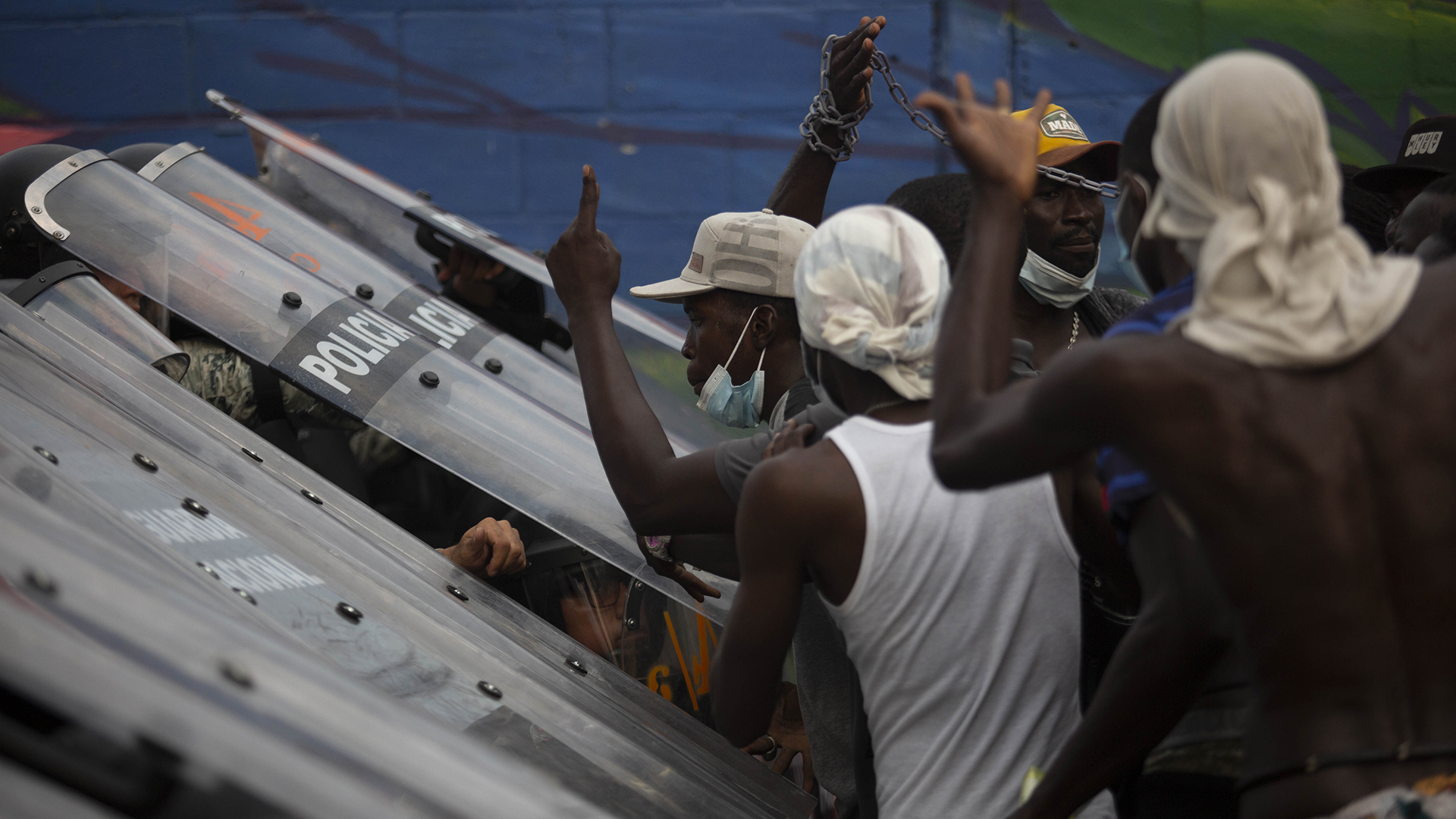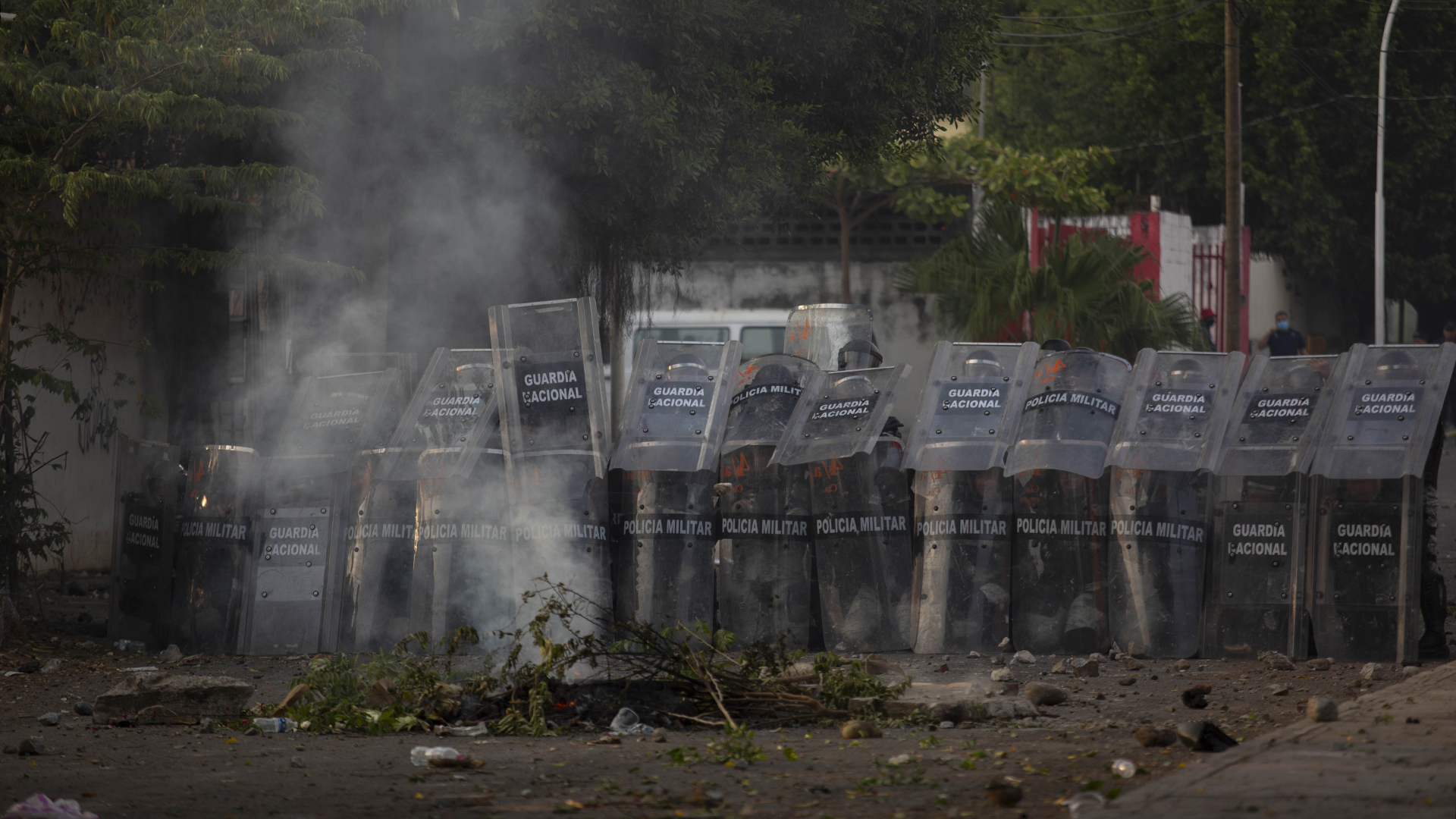In focus: Migrants languish in Mexico’s chaotic immigration system
In focus: Migrants languish in Mexico’s chaotic immigration system
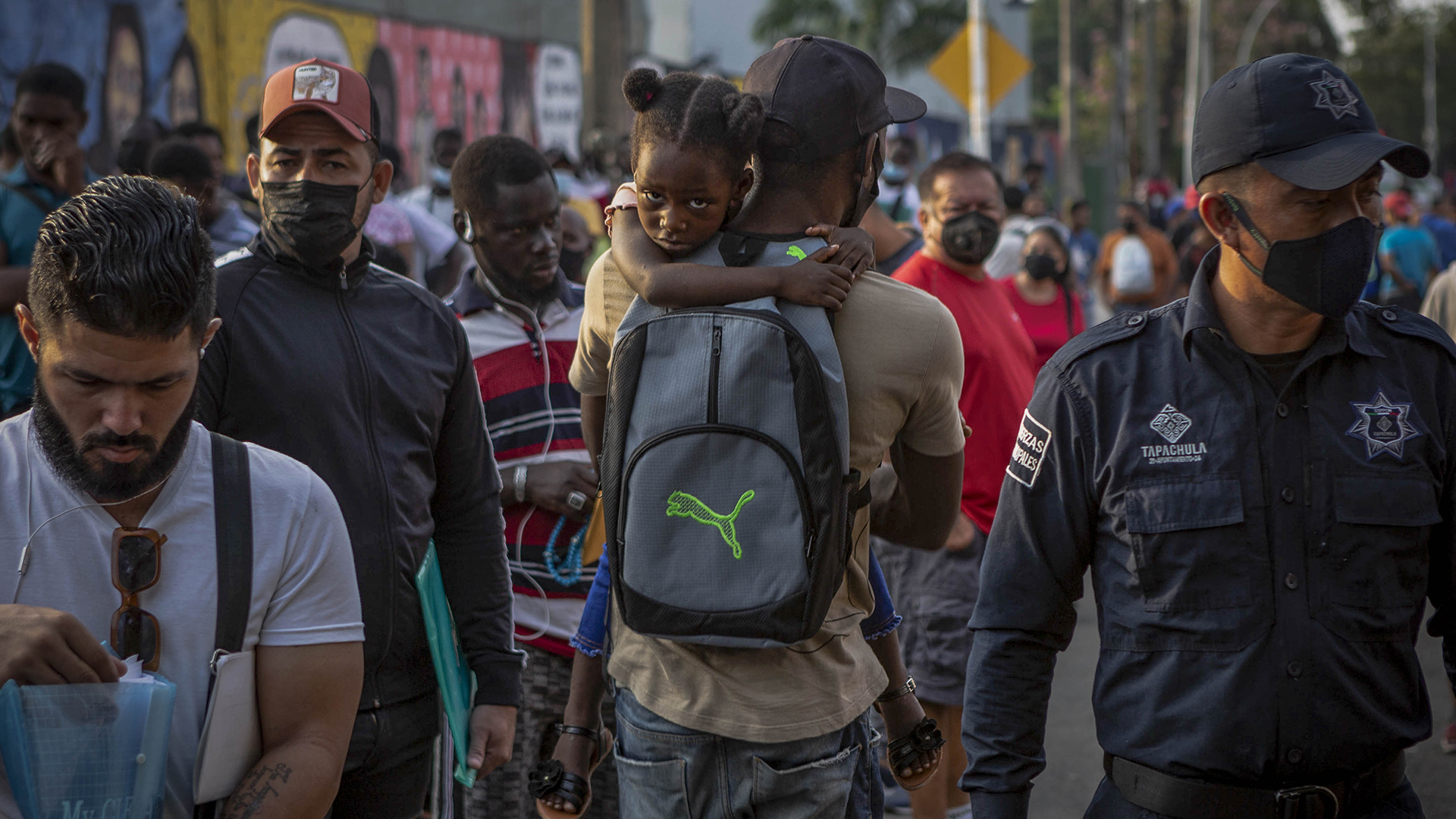
A young girl and her guardian walk away from the crush of migrants at the National Migration Institute in Tapachula, Mexico, on March 8, 2022. A long line has already formed early in the morning, and people reportedly arrive as early as 4 a.m. for a preferential spot in line. In early 2019, then-President Donald Trump and Mexican President Andrés Manuel López Obrador enacted the “Remain in Mexico” policy, which required about 66,000 asylum seekers in the U.S. to wait in Mexico while their claims were processed. (Photo by Taylor Bayly/Cronkite Borderlands Project)
